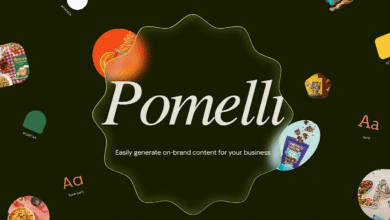Scale Content Without Losing Your Brand Voice

▼ Summary
– Scaling content without structure leads to fractured style, messaging drift, and reduced search visibility.
– Guardrails like style guidelines, quality systems, audits, and review workflows enable scaling without compromising integrity.
– A strong style guide defines tone, vocabulary, formatting, and examples to ensure consistent brand communication.
– Tiered quality control systems involving AI drafts, human editing, SME review, and final approval maintain reliability.
– Regular audits, clear role assignments, and tracking metrics like traffic and engagement ensure sustained alignment and performance.
Scaling content effectively requires more than just increasing output; it demands a strategic approach that preserves your brand’s unique voice while expanding reach. Many organizations mistakenly believe that producing more content automatically leads to greater visibility, but without clear systems in place, quality and consistency often suffer. The real challenge lies in balancing volume with authenticity, ensuring every piece of content aligns with core messaging and delivers genuine value to the audience.
A common pitfall occurs when brands ramp up production without establishing foundational guidelines. Style becomes fragmented as multiple contributors join the effort, leading to articles that feel disconnected or inconsistent. Messaging may drift when teams interpret information differently or rely on varied sources. Over time, this erosion of coherence can diminish trust and make content appear generic, ultimately reducing its impact in search results and generative platforms.
In today’s digital environment, where algorithms prioritize clarity, expertise, and distinctiveness, maintaining a consistent brand voice isn’t just beneficial, it’s essential. Search engines reward content that demonstrates E-E-A-T (Experience, Expertise, Authoritativeness, Trustworthiness), while AI tools are more likely to surface sources that offer unique, quotable insights. Without a unified tone and clear value proposition, even high-volume content strategies can fall flat.
The solution involves implementing structured guardrails that support scalable production without compromising integrity. Developing detailed style guidelines transforms abstract brand values into practical, actionable standards. A comprehensive style guide should address tone, vocabulary, formatting, and usage examples, providing clear direction for all contributors. For global teams, these guidelines may need localization to respect cultural nuances while maintaining brand coherence.
Practical tools like translation memory systems, shared reference libraries, and region-specific review sessions help distributed teams stay aligned. Creating templates and checklists further simplifies adherence, allowing writers and editors to verify tone, terminology, and structure as they work. This proactive approach prevents drift and ensures that every piece of content, whether a product update or thought leadership article, reflects the brand accurately.
Quality control plays a critical role in scaling successfully. A tiered workflow that incorporates AI-assisted drafting, human editing, subject matter expert review, and final approval distributes responsibility efficiently while safeguarding quality. AI can handle initial outlines and summaries, but human oversight remains vital for injecting nuance, voice, and depth. Review prompts and validation rubrics help teams assess clarity, accuracy, and alignment with broader goals.
Regular audits are necessary to maintain content integrity over time. Scheduled reviews of high-priority pages, such as landing pages, top-performing articles, and product content, help identify and correct messaging drift, outdated information, or stylistic inconsistencies. By tracking updates and retiring obsolete assets, organizations keep their content library fresh, relevant, and aligned with current standards.
Clear ownership and well-defined roles prevent confusion and bottlenecks in scaled content operations. Whether working with in-house teams, hybrid models, or external agencies, establishing accountability for drafting, editing, and approval ensures that nothing falls through the cracks. Centralizing resources in shared platforms like Airtable, Notion, or Google Docs streamlines collaboration and maintains an auditable trail of changes.
Every piece of content should serve a purpose and deliver measurable value. Embedding value tests into content briefs, asking what the reader will learn, why it matters, and how it supports business objectives, helps teams focus on creating meaningful, impactful work. Balancing depth with volume allows brands to produce both authoritative thought leadership and practical educational resources without diluting quality.
To gauge the effectiveness of scaled content, track a mix of metrics that reflect both reach and resonance. Monitor organic traffic, engagement rates, conversion attribution, search visibility, and mentions in generative outputs. Regular benchmarking and quarterly reviews provide insight into what’s working and where adjustments are needed. If performance plateaus, it may be necessary to refine strategy before increasing output further.
Successful content scaling strengthens both visibility and trust. By implementing disciplined processes, documenting style, enforcing quality controls, conducting audits, and assigning clear ownership, brands can grow their content footprint without sacrificing standards. This structured approach not only supports volume but also enhances authority, ensuring that every publication reinforces credibility and connects meaningfully with the audience.
(Source: MarTech)




